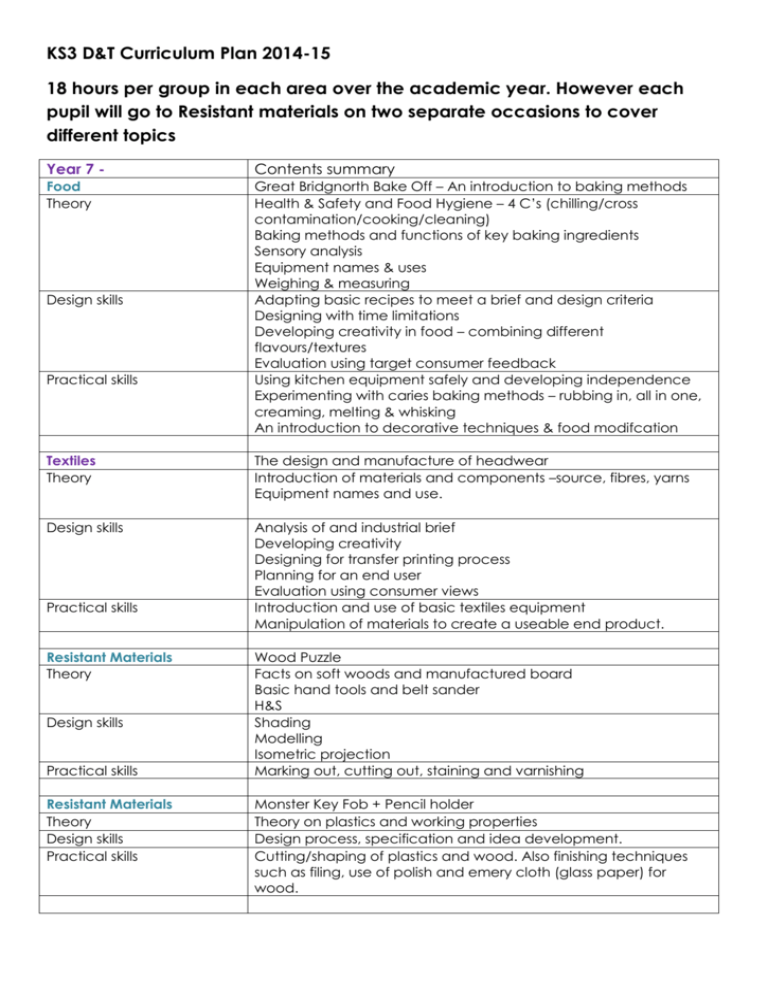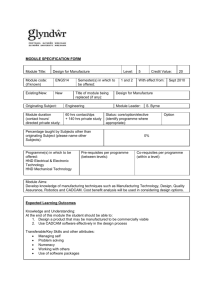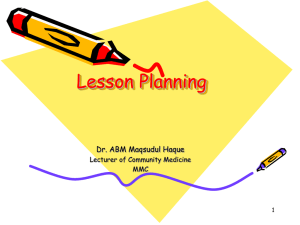Curriculum plan - Oldbury Wells School
advertisement

KS3 D&T Curriculum Plan 2014-15 18 hours per group in each area over the academic year. However each pupil will go to Resistant materials on two separate occasions to cover different topics Year 7 - Contents summary Food Theory Great Bridgnorth Bake Off – An introduction to baking methods Health & Safety and Food Hygiene – 4 C’s (chilling/cross contamination/cooking/cleaning) Baking methods and functions of key baking ingredients Sensory analysis Equipment names & uses Weighing & measuring Adapting basic recipes to meet a brief and design criteria Designing with time limitations Developing creativity in food – combining different flavours/textures Evaluation using target consumer feedback Using kitchen equipment safely and developing independence Experimenting with caries baking methods – rubbing in, all in one, creaming, melting & whisking An introduction to decorative techniques & food modifcation Design skills Practical skills Textiles Theory The design and manufacture of headwear Introduction of materials and components –source, fibres, yarns Equipment names and use. Design skills Analysis of and industrial brief Developing creativity Designing for transfer printing process Planning for an end user Evaluation using consumer views Introduction and use of basic textiles equipment Manipulation of materials to create a useable end product. Practical skills Resistant Materials Theory Design skills Practical skills Resistant Materials Theory Design skills Practical skills Wood Puzzle Facts on soft woods and manufactured board Basic hand tools and belt sander H&S Shading Modelling Isometric projection Marking out, cutting out, staining and varnishing Monster Key Fob + Pencil holder Theory on plastics and working properties Design process, specification and idea development. Cutting/shaping of plastics and wood. Also finishing techniques such as filing, use of polish and emery cloth (glass paper) for wood. 26 hours per group in each area over the academic year. Year 8 - Contents summary Food Theory Healthy you, Healthy Planet - Designing & Making a Healthy Pizza Seasonality & Food miles - sustainability in the food industry Developing products to meet government ‘Healthy Eating guidelines’ Eat well Plate – an introduction to nutrition Bread Making process – functions of key ingredients & stages of making Designing with seasonal & healthy ingredients Adapting recipes to meet a brief Designing food to enhance sensory characteristics’ Planning for making with H&S safety checks Using electrical equipment independently - blenders/whisks Bread making & shaping Healthy main meals & desserts Design skills Practical skills Textiles Theory The design and manufacture of a bag Embedded knowledge on Natural and synthetic fibres materials. CAD CAM decorative techniques in textiles. Design skills Analysis of and industrial brief Developing creativity and the introduction of logos Comparative shop studies Designing for sticker printing process Planning with QC measures for industry Evaluation using consumer views Introduction and use of CAD/CAM sticker manufacture. Pocket manufacture Consideration of linings and their manufacture Manipulation of materials to create a useable end product. Practical skills Resistant Materials Theory Design skills Practical skills Resistant Materials Theory Design skills Practical skills Tea-light holder Fact sheet on non-ferrous metals Raw materials/processing/recycling(cradle to grave) Modelling Free hand 2D drawing and rendering Extension- shade manufacture using CAD Cutting, shaping & annealing aluminium Drilling, riveting & pressing metals Laser cutter with acrylics (extension task) 26 hours per group in each area over the academic year. Year 9 - Contents summary Food Theory Developing a Menu Eat Well Plate & nutrient functions in the body An introduction into special dietary requirement’s – social/ethical and medical reasons Sauce making – methods/thickening agents Sensory analysis & product analysis/comparison Researching and designing innovative food product to meet an industrial design criteria Adapting recipes to fit customer needs & special dietary requirement’s Design original main meal & Healthy dessert Sauce making Cooking with raw meat & fish Independently selecting and using equipment Demonstrating professional food presentation skills Design skills Practical skills Textiles Theory Design skills Practical skills Resistant Materials Theory Design skills Practical skills Resistant Materials Theory Design skills Practical skills The design and manufacture of a decorated fashion garment Introduction into a range of decorative techniques both traditional i.e. resist dying and modern techniques i.e. texi foil Investigation into fashion designers past and present Developing criteria’s Designing for screen printing process/CAD & CAM Using product analysis to develop designing and criteria’s Manufacturing specifications Production plans for industry Testing against criteria Evaluation using consumer views Use of industrial decoration methods- screen printing(2D design for stencil manufacture) Texi foil, sticker, dying, embellishment, transfer printing. Container Carcase constructions Electronic- simple to complex circuits to include advanced mechanical systems and embedding intelligence in products Mood board Exploded isometric drawings Shading and rendering Google sketch up- graphic modelling Circuit diagrams Corel draw to create lid decoration Electrical circuits Joint manufacture- rebate and mitre Laser engraving









